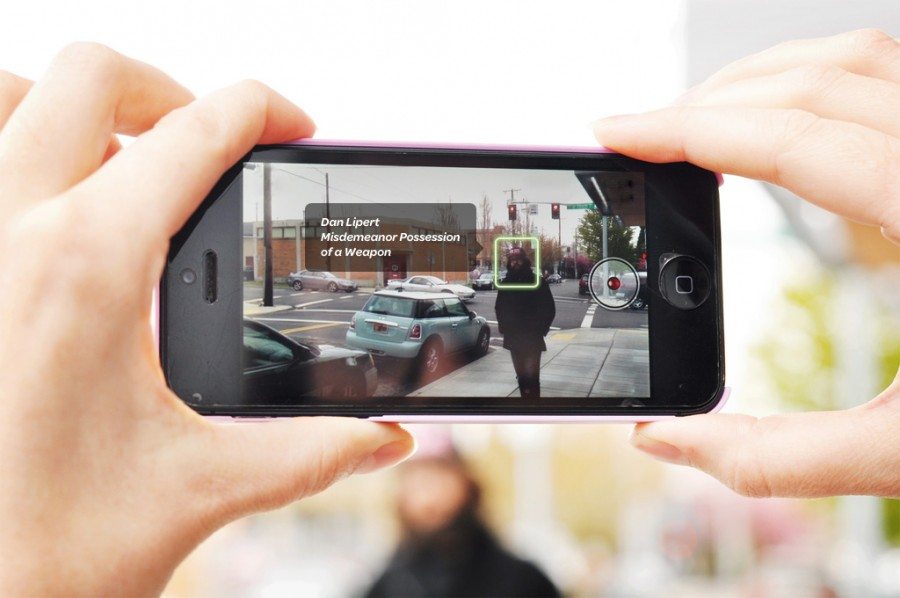Hyperlayer provides a free, open source application that combines cloud computing with facial recognition and next-generation mobile devices. The system can be used for safety, geomapping, consumer research and also has many other potential applications. The acquired data can be transmitted to any device that can connect to the Internet, which gives it great potential for the future of augmented reality (AR).
Where exactly does the AR aspect fit in to this? First of all, it’s important to note that Hyperlayer’s William Weinstein has a specific understanding of AR.
“To me, augmented reality is the merging of digital data layers with geolocations, with all kinds of information that’s contextual to the physical environment, merging that with actual real life experiences,” says Dan Lipert, Hyperlayer co-founder
AR is certainly extending its boundaries quite rapidly and companies such as Hyperlayer are leading the way. Take Oculus Rift virtual reality headset for example, the latest generation of this device has external cameras that watch the wearer. The purpose is to observe the user’s experience of the software and to use that information to enable a more sophisticated AR experience. The team at Hyperlayer uses external cameras, facial recognition and head pose estimation algorithms to understand how the user interacts with his or her environment and things within it. The presence of an external camera adds an extra element of realism to AR that a virtual reality headset alone cannot provide.
Weinstein and his team are working on a number of AR applications in for research. One of their current applications is in retail environments where it is used to garner customer intelligence and give researchers a new way to study their subjects.
“We use facial recognition and head pose estimation to understand what it is the shopper is looking at. Then imagine executives from one of the brands wanting to put themselves essentially inside the persona of the shopper using something like oculus rift. So we combine the data, the head pose estimation, the location of all the shoppers, then using a device like oculus rift you can have a virtual real tour of someone else’s shopping experience,” says Lipert, .
Layering the facial recognition with video and other data and adding augmented reality can create a new facet of information that is useful both for retailers and marketers. This technology reveals which brands and areas shoppers are drawn to, what arouses interest and inspires enthusiasm, and their experiences can then be replicated from their stand point, within a store. His information may then be aggregated depending on shopper’s demographics, such as female shoppers over 40 years of age, or male shoppers under 20 years of age. This really takes the acquisition of shopper information to a whole new level, as Weinstein explains.
“People have been using things like Bluetooth, RFID, and other technologies to generate a map of shopper traffic, but that doesn’t really tell you much about what they are looking at. Did they look at Cheerios and then at Fruit Loops and Back to Cheerios? That kind of information is really valuable for brands. But no one knows how to collect it other than to ask them, “Why did you buy Cheerios?””
Another potential functionality of Hyperlayer’s AR technology is a Facebook app powered by facial recognition. Imagine that you’re walking around, wearing your AR headset and looking at passersby when a friend of a friend passes you and their Facebook profile pops up and gives you their information.
Weinstein details how this application can be taken one step further.
“If you combine that with a law enforcement database, the same application has a totally differ use. If we’re walking around streaming videos running all these facial recognition algorithms, we can do all kinds of amazing things, such as find missing children and find people who have warrants our for their arrest.”
As AR technology advances, this type of application would be usable for law enforcement, security and even military personnel.
Indeed, the next generation of AR headsets is set to provide a totally different experience for users in general. Such technology will be geared to highlight and augment aspects of reality which are interesting to us individually. Before this can happen, Weinstein predicts that we will need “something like Oculus Rift but with a transparent display combined with stereo video cameras.” Extended battery life is also essential for AR to move forward.
The future could also hold more immersive wearable AR headsets that stream POV video from the user to the cloud 24/7, so as well as what you are actually seeing, you can have any amount of data relayed back and layered over that. Headset technology could eventually become so advanced that users would have no need to leave their AR world at all except, of course, when it’s time to get some real sleep.
Image credit: Hyperlayer



















